Earlier this week, Todd Kenreck sat down with his wife Meagan, as well as Makenzie de Armas and Dennis Aldea, the creators of the One on One D&D podcast, to talk about how to play D&D with one Dungeon Master and just one player.
Gathering a full party of three or more players to play D&D can be an arduous endeavor. Maybe you don’t have enough people interested in playing with you, or maybe your potential players’ schedules just don’t align properly. Perhaps—if you’re reading this in April 2020—you can’t leave your home and you want to play D&D with your romantic partner, or your roommate. This style of play, sometimes called one-on-one D&D or duet-style D&D, is a great way to play without the challenge of assembling a full adventuring party.
Even if you’re just curious about this atypical style of playing D&D, read on. We’ll discuss best practices for playing duet D&D, good starter one-on-one adventures that you can try out in an evening, and tips for creating your own duet adventures. Let’s go on an adventure—alone!
Playstyle Tips for Duet Play
The best moments in Todd’s conversation with Meagan, Makenzie, and Dennis occurred when one of them dropped a nugget of one-on-one D&D wisdom and the others all exclaimed how true it was. Let’s start by sharing some of our panelist’s best tips for playing D&D with just one player.
Talk to Each Other. Communication is hard, and communicating openly with one single person can be the hardest thing of all. Nevertheless, it’s absolutely vital that you are able to discuss anything with your fellow duet player. If you don’t feel comfortable expressing your concerns, sharing your favorite moments, or just being vulnerable with your friend, your campaign might be doomed to failure. On the flip side, being open and honest with one another is a great way to strengthen your friendship, even outside of playing D&D!
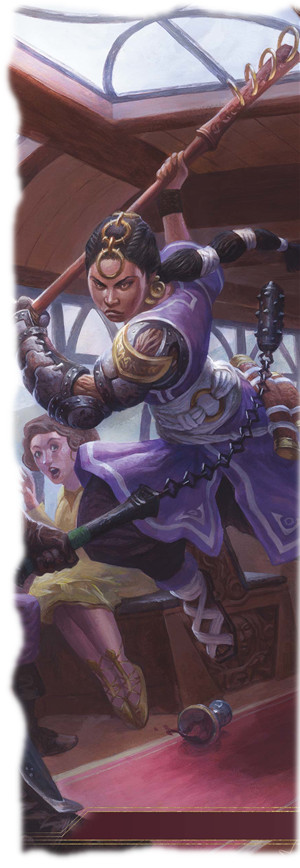 Plan Together. On a related note, one thing you should always discuss with your game partner is what things you both find fun. Some D&D players can “suck it up” and slog through an unfun dungeon if they know that their fellow party members are having fun, but this is a miserable way to play D&D when you’re the only player. The DM doesn’t have to share all of their notes with their game partner in order to make the game fun, but having a Session Zero to discuss things that you’d like to see in your campaign is vitally important in duet play. Do you like lots of combat? Lots of social interaction? A mix of everything? Do you not like emotionally intense scenes, or scenes of graphic violence? Discuss those things up front!
Plan Together. On a related note, one thing you should always discuss with your game partner is what things you both find fun. Some D&D players can “suck it up” and slog through an unfun dungeon if they know that their fellow party members are having fun, but this is a miserable way to play D&D when you’re the only player. The DM doesn’t have to share all of their notes with their game partner in order to make the game fun, but having a Session Zero to discuss things that you’d like to see in your campaign is vitally important in duet play. Do you like lots of combat? Lots of social interaction? A mix of everything? Do you not like emotionally intense scenes, or scenes of graphic violence? Discuss those things up front!
You might even want to revisit your Session Zero every few sessions, just to make sure you’re both still on the same page.
How Many Adventurers Are There? This might seem like a silly question to pose in a game of one-on-one D&D, but it’s not uncommon for players to play more than one character. This is made even easier thanks to the Sidekick rules presented in the D&D Essentials Kit. These sidekick rules essentially let one player play a whole D&D party, sort of how you control an entire party in computer RPGs like Baldur’s Gate. Is this fun for you? Or does it defeat the purpose of duet play?
Similarly, ask about player pets. Would you allow your player to have a pet displacer beast? Or would you require that player to play a pet class like a Beast Master ranger, Pact of the Chain warlock (both from the Player’s Handbook), or Battle Smith artificer (from Eberron: Rising from the Last War) in order to have an animal sidekick?
Modify Encounters. Encounter building has always been more art than science, but that becomes more true than ever when you have a party of one. Without a full party to provide a safety net for your character, it's easy to get overwhelmed by monsters—especially when you're outnumbered even two-to-one or three-to-one. If you're running an adventure designed for a party of characters, like one of the official D&D hardcovers, the DM will need to do some work to modify the encounters so that the single character doesn't get pulverized. The D&D Beyond Encounter Builder is great for that; just enter your party size as having only 1 character and add in the monsters from the original encounter. Then you can futz with the number of (and even type of) monsters present until the encounter's difficulty is rated as Hard. That's a great starting point, and from here the DM can start finessing the difficulty of your encounters to best suit the player's power level and tactical skill.
Rethink Death and Dying. D&D becomes very dangerous when you don’t have a balanced party to back you up. Once you fall unconscious, you don’t have any way of being healed back up—all you can do is hope that you pass three death saving throws before you fail three. And if fortune doesn’t smile upon you (or if your enemies are vicious and stab you while you’re bleeding out) then your adventure will come to a quick and messy end. Makenzie and Dennis suggested using the Injuries rules presented in chapter 9 of the Dungeon Master’s Guide to soften the consequences of failing three death saving throws in order to keep the adventure going.
In this system, your character doesn’t die when they fail three death saves, unless you and your DM agree that it’s implausible for them to survive or just narratively appropriate that your hero’s adventure comes to an end. Instead, they fall unconscious and awaken later, now with an injury from the Lingering Injuries table. You may have been captured or left for dead, but you’ve probably also lost all of your precious gear—which for some adventurers is a fate worse than death anyway.
Don’t Stay in One Role for Too Long. When you’re playing D&D one-on-one, it can be stressful to always be the Dungeon Master, or to always be the player. To take the stress off you and your fellow player, try swapping out roles when you stop having fun in your current role. You may want to switch to a different campaign when you switch roles, or focus on a different part of the same campaign you’ve been playing the whole time.
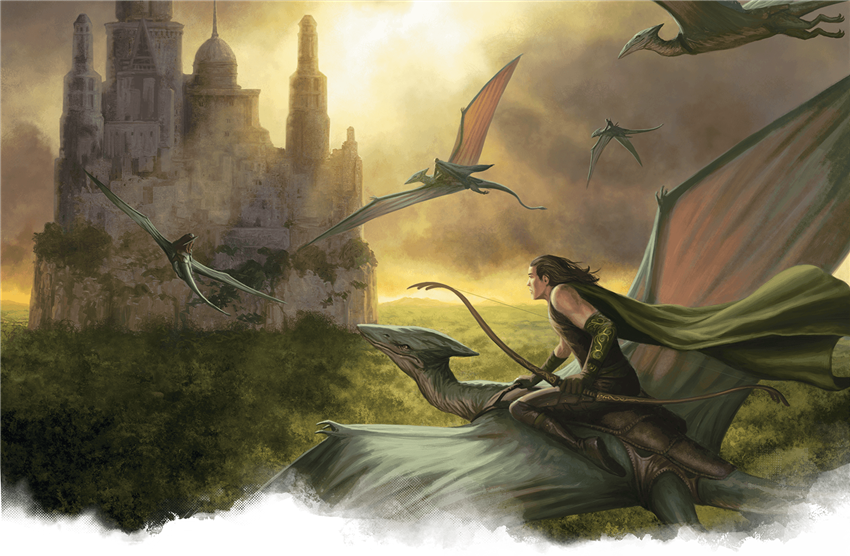
Adventures for Duet Play
If you want to play D&D duet style, you’re going to need an adventure. This can be tricky, since the overwhelming majority of D&D adventures are designed for one Dungeon Master and a group of three to five other players. Ultimately, the best way to play one-on-one is to create the adventures yourself. This lets you tailor your challenges and story moments specifically to the needs and wants of you and your fellow player. Creating duet adventures takes a very different skill set than creating adventures for a whole party of characters, but you’ll get better at making adventures the more you do it.
Nevertheless, there are two ways to learn to do something. The first is to learn by doing, as we explained above. The second is to learn by example. Reading adventures is the way all the good D&D writers in the world learned how to create engaging adventures of their own. Start by reading. There aren’t nearly as many duet adventures in the world as there are party-based ones, but that doesn’t mean there aren’t any. And in fact, there are a couple really great ones. Here are two duet adventures that will give you a great crash course in how to write an adventure that you can play with just one other person.
First Blush
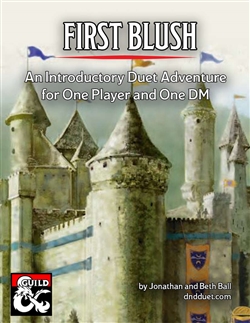 The pressures of one’s birth negotiate a difficult harmony with one’s destiny. A new path might be directly ahead, but how is one to know?
The pressures of one’s birth negotiate a difficult harmony with one’s destiny. A new path might be directly ahead, but how is one to know?
First Blush is a classic, pioneering adventure of the one-on-one adventure genre and a DMs Guild Mithral Best Seller. The term “duet adventure” stems from the name of the authors Beth and Jonathan Ball’s blog, DnD Duet. This blog includes more than just links to one-on-one adventures for you to buy. If this article has got you interested in playing D&D in a one-on-one setting, their website includes more articles that go in-depth on how to help you run a great duet session of D&D.
But what about the adventure? First Blush is a one-shot adventure designed to be played with one DM and one player, in which the player character escapes from confinement in a castle and discovers an ancient secret that threatens to change their life forever. First Blush leans into fantasy novel tropes in a way that party-based D&D adventures can’t; this is a singular story with one character as a protagonist. This gives you the chance to have a full-fledged Campbellian hero’s journey in your duet game, which some D&D players might be longing for, if they’ve only played in party-based games.
This adventure is pay-what-you-want, and while it functions perfectly well as a one-shot adventure, it also can be used as the launching point for a trilogy of stories continued in its sequels: Second Glance and Third Time’s the Charm.
The Blood Hunter
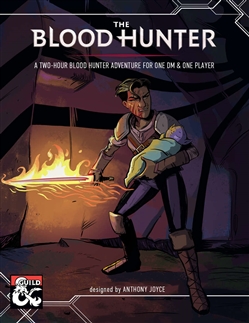 You are a Blood Hunter, feared by even the most vile monstrosities throughout Faerûn. Commoners shut their windows and lock their doors as you approach, and small children cry at the sight of your unnatural demeanor. Such is the burden of life as a Blood Hunter.
You are a Blood Hunter, feared by even the most vile monstrosities throughout Faerûn. Commoners shut their windows and lock their doors as you approach, and small children cry at the sight of your unnatural demeanor. Such is the burden of life as a Blood Hunter.
The Blood Hunter is a one-shot duet adventure is inspired by Matthew Mercer’s blood hunter class and the Claret Orders described in Explorer’s Guide to Wildemount. This adventure, written by Anthony Joyce, has become an instant classic on the DMs Guild, earning an impressive Gold Best Seller medal in its first month of release. While this adventure is less explicitly personal than First Blush, it packs in the thrills by casting you as a 5th-level blood hunter hunting a werewolf terrorizing Phandalin, the well-known setting of the D&D Starter Set adventure Lost Mine of Phandelver.
Because of the game’s more personal nature, it feels confident delving into game mechanics that might cause a party-based game to drag. The protagonist of this adventure possesses some skill in the art of hemocraft, and can use the blood of their enemies to create alchemical potions that grant them volatile powers. While deliberating over what type of potion to make might not go over well in a game where four other players all want to take their turn, this sort of minute tactical decision makes perfect sense in a one-on-one setting.
Your Own Adventure
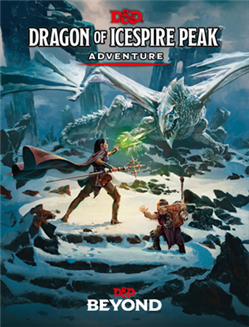 Take a look at these two adventures, or search for your own duet adventures. Read through them carefully and try running at least one of them for a friend. They’re short, and—if you’re reading this in April 2020, anyway—you’re self-isolating at home, anyway. Get yourself set up to play D&D online with a friend and run one of these 2 to 4 hour adventures. You can even try borrowing ideas from the short quests of the D&D Essentials Kit adventure Dragon of Icespire Peak. While you're there, put the Sidekick rules from that adventure in your duet D&D toolkit; even if your player doesn't want to have a sidekick all the time, maybe one story you want to tell will call for a secondary character that helps the hero.
Take a look at these two adventures, or search for your own duet adventures. Read through them carefully and try running at least one of them for a friend. They’re short, and—if you’re reading this in April 2020, anyway—you’re self-isolating at home, anyway. Get yourself set up to play D&D online with a friend and run one of these 2 to 4 hour adventures. You can even try borrowing ideas from the short quests of the D&D Essentials Kit adventure Dragon of Icespire Peak. While you're there, put the Sidekick rules from that adventure in your duet D&D toolkit; even if your player doesn't want to have a sidekick all the time, maybe one story you want to tell will call for a secondary character that helps the hero.
If you enjoyed the experience and want to create your own duet adventures to play, start by writing down a few of your thoughts after the game. Come back to those thoughts later and jot down a few story ideas. Start by building these ideas out into a scene-by-scene (or area-by-area) outline. If you’ve completed an outline, that’s all you need to run an adventure! You’ll need more meat on those bones if you want to publish it on the DMs Guild, but a solid structure is all you need to run a game of D&D, even in this unfamiliar format. Keep the advice above in mind while playing, and you and your friend will have a great time.
Have you ever played D&D one-on-one before? What advice would you give to people who want to try playing this way? Let us known in the comments!
Create A Brand-New Adventurer Acquire New Powers and Adventures Browse All Your D&D Content
 James Haeck is the lead writer for D&D Beyond, the co-author of Waterdeep: Dragon Heist, Baldur's Gate: Descent into Avernus, and the Critical Role Explorer's Guide to Wildemount, a member of the Guild Adepts, and a freelance writer for Wizards of the Coast, the D&D Adventurers League, and other RPG companies. He lives in Seattle, Washington with his fiancée Hannah and their animal companions Mei and Marzipan. You can find him wasting time on Twitter at @jamesjhaeck.
James Haeck is the lead writer for D&D Beyond, the co-author of Waterdeep: Dragon Heist, Baldur's Gate: Descent into Avernus, and the Critical Role Explorer's Guide to Wildemount, a member of the Guild Adepts, and a freelance writer for Wizards of the Coast, the D&D Adventurers League, and other RPG companies. He lives in Seattle, Washington with his fiancée Hannah and their animal companions Mei and Marzipan. You can find him wasting time on Twitter at @jamesjhaeck.








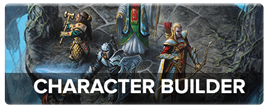
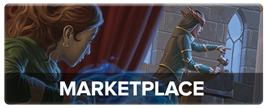
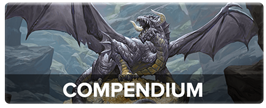
-
View User Profile
-
Send Message
Posted Apr 22, 2020Coincidentally, I've done this with a friend through Discord just yesterday!
I wanted to test some homebrewers and requested his help, we set up two PCs (Cleric and Fighter) to accompany and help him and then rolled some random dungeons and encounters to test some combat options out, but in the end, it was great, even if it wasn't for the homebrew tests. Just sharing time with a friend discussing game mechanics and abilities and rolling some random treasure for them to use in the next combat was incredibly engrossing and kept us busy for several hours.
Definitely recommend it :)
-
View User Profile
-
Send Message
Posted Apr 23, 2020Thanks man, seems very simple yet very effictive!!
-
View User Profile
-
Send Message
Posted Apr 23, 2020What would yall suggest in terms of a DMPC for a one on one? Yes or no? I feel like it would be interesting and balanced if it is just one on one? I'm planning on running one on one with my girlfriend soon since we live long ways from each other.
-
View User Profile
-
Send Message
Posted Apr 23, 2020That falls very firmly in the category of "talk about it with your player." If your player wants to have an NPC companion, go for it! If not, few things will bury a campaign faster than an unwanted spotlight-stealer.
-
View User Profile
-
Send Message
Posted Apr 23, 2020Thanks! Great article.
-
View User Profile
-
Send Message
Posted Apr 23, 2020My first exposure to D&D was a one-on-one. No rulebooks, no dice - just two high schoolers with nothing to do during the first 10min of PE while the teacher took role.
I was a red mage, learned the secrets of the universe from a thousand-year imprisoned genie, and polymorphed into a sloth in the middle of an orc army. A satisfying arc over the course of one semester. Hooked ever since.
I think it's good to remember when playing D&D, whether with a group or one player, that it's about the story, and to lean into the fun.
-
View User Profile
-
Send Message
Posted Apr 23, 2020I DM one-on-one with both of my kids, and neither of them want sidekicks or any other party members, just 100% solo adventuring. Allowing them access to more frequent and higher-level magic items seems to work best. If I want to throw in a monster that is simple too difficult to solo, then I frame it in a way that help is available without being 'attached' to the PC (such as escorting a group of pilgrims, or an attack on the village)
-
View User Profile
-
Send Message
Posted Apr 23, 2020Really great article James. I dm one on one rpgs for 2 years now and wondered if there is more people playing it this way. Really helpful.
-
View User Profile
-
Send Message
Posted Apr 23, 2020I am 63 and a former owner of a game shop called The Magic Store in Oak Harbor, WA. Grandma's were playing this game when we were young, I started when my oldest son was 13 and he and his friends needed a place to play, I listened in and enjoyed the concept ( they were playing Shadow Run at the time) I eventually became their DM and a couple of years later I opened my store. We had a blast! I played Magic the Gathering, Pokemon, D&D and Warhammer. I now play online with friends ( I am running both Curse of Straud and The Infernal Machine Rebuild) and I have been playing DDO for over 10 years. I am the guild leader of Pay It Forward on Sarlona and several other servers, I go by Moonhair.
So ask your Grandma if she ever played make believe as a child, its a good way to get her thinking in the right direction, tell her a story and have her participate, once she engages and is rewarded with your attention, you will have a hard time getting a moment alone..LOL Cheers!!
-
View User Profile
-
Send Message
Posted Apr 23, 2020Tried one on one with my wife, realized how different it was, and we only ever did a couple sessions. Typically as a DM I get to sit back a lot and watch things unfold among my players, but with just my wife it was constant effort, and moments of smaller tasks just felt really weird, definitely needed practice, if I can convince her to give it another go.
-
View User Profile
-
Send Message
Posted Apr 23, 2020Patherfind has a card game where you could play solo or in small groups?
It would be awesome to have a "DM in a box" that present NPC, obstacles, or things to fight. You have an adventure(s), maps, and a story of what you are trying to accomplish. Then several decks of cards. Also, people could homebrew adventures using cards from the official adventures.
This could be abused, but I would love an official Adventures League game I could play solo.
I would gladly pay $60 for a campaign like that!
-
View User Profile
-
Send Message
Posted Apr 23, 2020Love this!
-
View User Profile
-
Send Message
Posted Apr 23, 2020Great article! I DM two party-based PbP games but always wanted to either run or play in a one-on-one. My wife and I tried to run LMOP with her managing a full party of 5 characters, but constantly swapping from one character sheet to another was just too overwhelming and we never got past the goblin hideout.
I love the idea from ZorgAlmighty about introducing more magic items into a campaign for a solo character...that’s as brilliant as it is simple. Sweet loot is my favorite part of the game (as a DM and player) so I’m shocked that I never thought of that before. Thanks for that!!
I could definitely see us taking another stab at a loot-heavy solo campaign...maybe this time we can start with a Beastmaster Ranger at level 5, throw in a couple of reluctant sidekicks and a pet tiger who go on a crusade to uncover the truth about the disappearance of a local doctor. Yeah, that could totally work....
-
View User Profile
-
Send Message
Posted Apr 23, 2020I recently started a 1-on-1 campaign with my wife on Friday nights, thanks to social distancing and quarantine. The only advice I have that isn't mentioned in the video or article is to be a bit liberal with magic items out of the gate. My wife is relatively new to D&D, so of course she picked a squishy wizard as her first solo class. I thought about starting her at a higher level, but there's a lot more spells to keep track of by jumping ahead and I felt she might learn the class better by leveling slowly. It helps, though, that she chose a noble background. Right away at level one, I was able to bestow her an Amulet of Health as a family heirloom, and Bracers of Defense as a recent birthday gift from her mother. It won't fix everything that is challenging with solo player encounter design, but every little bit helps. We're also playing through First Blush (modified into an Eberron setting) so it helped me to have a campaign guide already structured for DM'ing solo play but I already have a lot of ideas for how to take it beyond the first couple books.
-
View User Profile
-
Send Message
Posted Apr 23, 2020Wizkids make several licensed D&D board games that can be played solo or in teams. The cards and map tiles act as the DM. I have Dungeon of the Mad Mage. Comes with tons of minis too.
-
View User Profile
-
Send Message
Posted Apr 23, 2020You might like D&D’s Dragonfire: www.dragonfirethegame.com
It ports over the 5th edition lore and artwork with some really handsome looking cards. Tons of expansion sets too
-
View User Profile
-
Send Message
Posted Apr 24, 2020Great read,
I'm up to Third times the charm with my daughter playing a dwarven barbarian. She'd never touched the game before 2 months ago, and now all she wants to do is find out about the amulet, save the guy and hunt down whoever disrupted the teleportation beam (with her axe). The make up of these adventures is really good and for the most part fairly basic, so for a beginning player they're great. I don't think the second one suits a beginning DM though, however we got through it with some creativity, and she's champing at the bit to start the third which is a really good indication over this really interesting/creative storyline.
With the NPC in it she runs him in combat (so she also learns this class), whilst I run him during the rest of it.
All in all solo's are a lot of fun, but we limit the play time to 2-3 hours max per session as it's a lot more intense and draining on both DM and Player.
-
View User Profile
-
Send Message
Posted Apr 24, 2020There's also solo adventures, if you don't have a DM:
-
View User Profile
-
Send Message
Posted Apr 24, 2020My wife and I started playing 1:1 shortly before COVID. We began with the Starter Kit (Phandelver).
She is the main PC and I DM while also playing a sort of sidekick PC/NPC. I just made him a more passive character that defers to others when it comes to decisions ("you got it, boss"). The sidekick is a local and her main PC is a foreigner, so I can actually roleplay as my character at times while DMing because he knows more about the history, factions, etc. of the region. This adds immersion and allows me to stay in character longer periods of time.
For combat, I nerf the monster AC and number of adversaries slightly. It's also been great to watch my wife get creative with spells like sleep and prestidigitation to avoid groups of baddies!
-
View User Profile
-
Send Message
Posted Apr 24, 2020I completely love that you are playing with GRANDMA and your parents. This makes me happy. I can only hope I can get my nephew (I have no kids) into D&D so he can DM for me as I age.
I would grant you inspiration if I could!